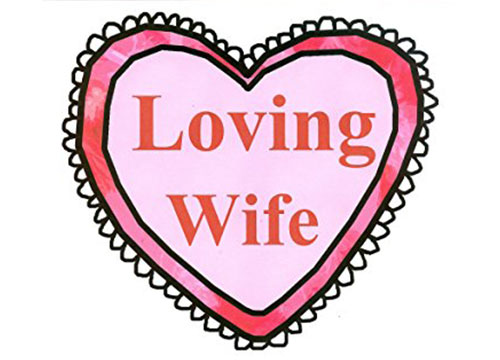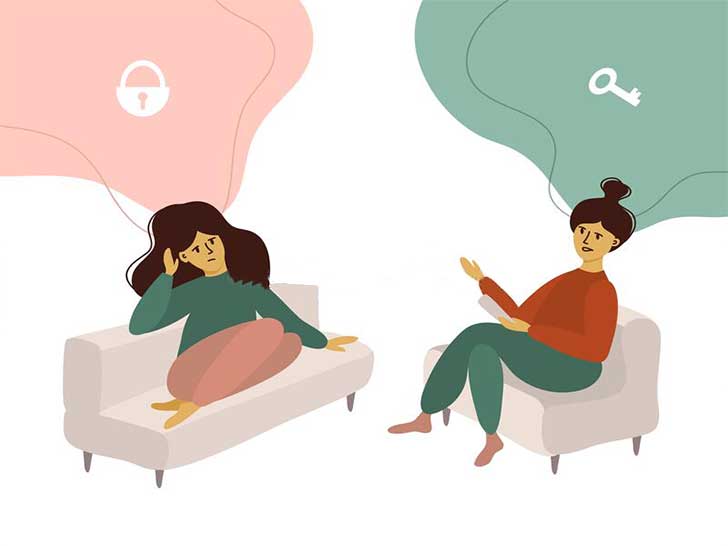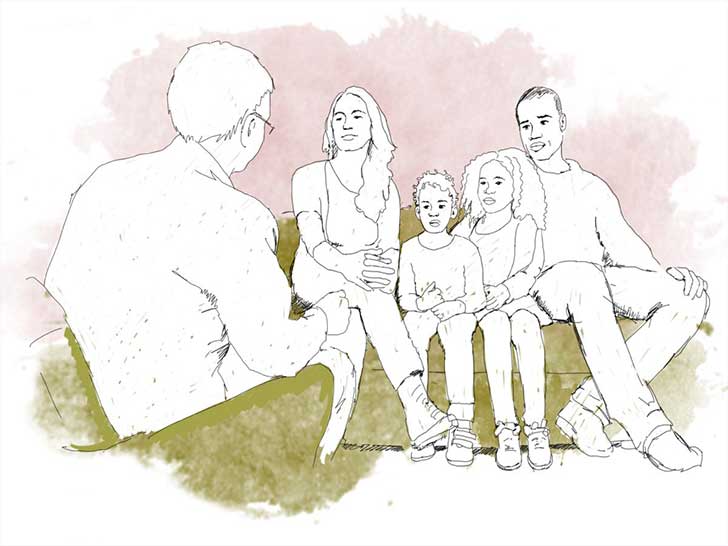اخبار روانشناسی ندای مهر
|
|
|||||||||||||||||||||||||||||||||||||||||||||||||||||||||||||||||||||||||||||||||||||||||||||||||||||||||||||||||||||||||||||||||||||||||||||||||||||||||||||||||||||||||||||||||||||||||||||||||||||||||||||||||||||||||
|
RSQ
Relationship Scales Questionnaire (RSQ; Griffin & Bartholomew‚ 1994).
The RSQ contains 30 short statements drawn from Hazan and Shaver's (1987) attachment measure‚ Bartholomew and Horowitz's (1991) Relationship Questionnaire‚ and Collins and Read's (1990) Adult Attachment Scale. On a 5-point scale‚ participants rate the extent to which each statement best describes their characteristic style in close relationships. Five statements contribute to the secure and dismissing attachment patterns and four statements contribute to the fearful and preoccupied attachment patterns (if you click on the above Relationship Scales Questionnaire link‚ the items that correspond to each attachment pattern are listed at the end of the measure). Scores for each attachment pattern are derived by taking the mean of the four or five items representing each attachment prototype. In addition to obtaining the four-category model subscales of the RSQ (see below for the relevant items)‚ the three Hazan & Shaver (1987) attachment styles can be obtained by simply going back to their original Adult Attachment Style measure and matching up the statements. Additionally‚ the three dimensions used by Collins and Read (1990) can also be obtained. Alternatively‚ and perhaps preferably‚ you can use the questionnaire to derive scales of the underlying two dimensions. This can be done two ways: 1) by conducting a factor analysis of the items or 2) by using the scores from the four prototype items to create linear combinations representing the self and other-model attachment dimensions. We recommend that you consult the Kurdek (2002) paper in JSPR which recommends the best approach for scoring the measure dimensionally.
Like the RQ‚ the RSQ can be worded in terms of general orientations to close relationships‚ orientations to romantic relationships‚ or orientations to a specific adult‚ peer relationship.
The RSQ is designed as a continuous measure of adult attachment. The RSQ was NOT designed‚ nor intended to be used‚ as a categorical measure of attachment. If‚ however‚ it is absolutely necessary for you to classify participants into attachment patterns‚ you must use standard scores. First‚ you would create the four subscales by computing the mean rating of the items for each subscale. Then you would transform those mean ratings into standard scores. This is a far from ideal use of the RSQ and should be undertaken only as a last resort!
Please read each of the following statements and rate the extent to which you believe each statement best describes your feelings about close relationships.
http://www.sfu.ca/psyc/faculty/bartholomew/rsq.htm
|
|
||||
|
|
||
|
SSSS (Sources of Social Support Scale)
Together with Mike Antoni and a number of other people‚ I have been involved for several years in research on the effects of a multi-modal cognitive-behavioral stress management intervention on the psychosocial well-being of breast cancer patients. In the course of this work‚ several questions have arisen about social support. One question is whether different sources of support matter in different ways (e.g.‚ partner‚ friends‚ health care providers). Another question is how different aspects of support differ. Indeed‚ there is a developing literature suggesting that negative support is more impactful than positive support. Neither of these questions is new--both have been asked by other people. However‚ we found ourselves not entirely satisfied with how existing measures differentiated these variables from each other. We developed an item set of our own‚ which has now been used in at least two longitudinal studies of cancer patients (breast and prostate cancer).
The SSSS has a separate section for each potential source of support being assessed. Each section uses essentially the same items (with appropriate changes of pronouns). Proper citation is as follows: Carver‚ C. S. (2006). Sources of Social Support Scale. http://www.psy.miami.edu/faculty/ccarver/sclSSSS.html Here are the instructions for the SSSS‚ and the items as they would be applied to husband/partner. These items concern the kinds of help and support you get from various people regarding your illness. The items ask about several different sets of people‚ but apply the same questions to each. Use the following choices for these items: 1 = Not at all 2 = A little 3 = A moderate amount 4 = A pretty large amount 5 = A lot A. The first items concern your husband/partner. [If you do not have a husband/partner‚ leave these items blank and skip to section B]. 1. How much does your husband/partner give you advice or information about your breast cancer (whether you want it or not)? 2. How much does your husband/partner give you assistance with things related to your breast cancer (for example‚ helping you with daily chores‚ driving you places‚ dealing with bills and paperwork)? 3. How much does your husband/partner give you reassurance‚ encouragement‚ and emotional support (affection) concerning your breast cancer? 4. How much does your husband/partner listen to and try to understand your worries about your breast cancer? 5. How much can you relax and be yourself around your husband/partner? 6. How much can you open up to your husband/partner if you need to talk about your worries about your cancer? 7. How often does your husband/partner argue with you relating to your cancer? 8. How often does your husband/partner criticize you relating to your cancer? 9. How often does your husband/partner let you down when you are counting on him? 10. How often does your husband/partner withdraw from discussions about your illness or try to change the topic away from your illness? B. The next items concern adult women in your family (sisters‚ mother‚ aunts or adult daughters). [If you do not have adult women in your family‚ leave these items blank and skip to section C]. Subsequent sections in this particular application are other family members‚ friends‚ and health care providers. |
|
|
||||||||||||
|
Frustration with Partners
10 Item Attachment Scales
These scales were originally presented by Brennan‚ Shaver & Hazan (1989) but not published in print until included in a later article (Brennan & Shaver‚ 1995). The authors created these scales by conducting a large scale‚ oblique factor analysis of 143 individual items‚ that resulted in 34 factors with eigenvalues greater than one. Seven of the factors were selected as having sufficient items to each form a 10-item sub-scale with adequate internal reliability. The seven factors were titled:
All items were measured on 7-point Likert-type scales ranging from "disagree strongly" to "agree strongly". The following two of the seven sub-scales are extracted from Brennan & Shaver (1995).
Frustration with Partners
Proximity-Seeking
Notes: (R) indicates reverse scored item.
During their study‚ Brennan & Shaver (1995) compared scores from this scale with attachment style measured using the Adult Attachment Questionnaire. They found the following relationships:
Discriminant function analysis using all seven scales was used to categorise participants and this was compared with their self-report classification using the Hazan and Shaver measure. The two resulting discriminant functions correctly predicted the attachment style of 72.3% of participans. These functions separated out the secure from the avoidant participants and then separated out the anxious/ambivalent participants.
Factor analysis was conducted on the seven sub-scales using principal axis extraction. Two factors emerged which accounted for 71.3% of the variance and correlated at only r = 0.05. Based on the contributing items‚ these factors were labelled 'insecurity‚' which distinguished avoidant from secure participants‚ and 'preoccupation with attachment‚' which distinguished anxious/ambivalent from secure participants.
http://www.richardatkins.co.uk/atws/page/41.html
|
Positive feelings‚ items 6‚ 8‚ 22‚ and 28
Cognitive Problems‚ items 2‚ 3‚ 4‚ and 23
Pain‚ items 13‚ 17‚ 21‚ and 27
Sexual Interest‚ items 16 and 26
Energy/Fatigue‚ items 1 (reversed)‚ 5‚ 11‚ and 14
Sexual Function‚ items 10 and 12
Social Avoidance‚ items 15‚ 18‚ 20‚ and 25
Financial Problems‚ items 30‚ 37‚ 43‚ and 45
Benefits‚ items 29‚ 32‚ 40‚ and 41
Distress-Family‚ items 31‚ 34‚ and 42
Appearance‚ items 33‚ 35‚ 38‚ and 44
Distress-Recurrence‚ items 36‚ 39‚ 46‚ and 47
1 = never 2 = seldom 3 = sometimes 4 = about as often as not 5 = frequently 6 = very often 7 = always
In the past 4 weeks ...
1. You had the energy to do the things you wanted to do.
2. You had difficulty doing activities that require concentrating.
3. You were bothered by having a short attention span.
4. You had trouble remembering things.
5. You felt fatigued.
6. You felt happy.
7. You felt blue or depressed.
8. You enjoyed life.
9. You worried about little things.
10. You were bothered by being unable to function sexually.
11. You didn’t have energy to do the things you wanted to do.
12. You were dissatisfied with your sex life.
13. You were bothered by pain that kept you from doing the things you wanted to do.
14. You felt tired a lot.
15. You were reluctant to start new relationships.
16. You lacked interest in sex.
17. Your mood was disrupted by pain or its treatment.
18. You avoided social gatherings.
19. You were bothered by mood swings.
20. You avoided your friends.
21. You had aches or pains.
22. You had a positive outlook on life.
23. You were bothered by forgetting what you started to do.
24. You felt anxious.
25. You were reluctant to meet new people.
26. You avoided sexual activity.
27. Pain or its treatment interfered with your social activities.
28. You were content with your life.
The next set of questions asks specifically about the effects of your cancer or its treatment. Again‚ for each statement‚ indicate how often each of these statements has been true for you in the past four weeks.
29. You appreciated life more because of having had cancer.
30. You had financial problems because of the cost of cancer surgery or treatment.
31. You worried that your family members were at risk of getting cancer.
32. You realized that having had cancer helps you cope better with problems now.
33. You were self-conscious about the way you look because of your cancer or its treatment.
34. You worried about whether your family members might have cancer-causing genes.
35. You felt unattractive because of your cancer or its treatment.
36. You worried about dying from cancer.
37. You had problems with insurance because of cancer.
38. You were bothered by hair loss from cancer treatment.
39. You worried about cancer coming back.
40. You felt that cancer helped you to recognize what is important in life.
41. You felt better able to deal with stress because of having had cancer.
42. You worried about whether your family members should have genetic tests for cancer.
43. You had money problems that arose because you had cancer.
44. You felt people treated you differently because of changes to your appearance due to your cancer or its treatment.
45. You had financial problems due to a loss of income as a result of cancer.
46. Whenever you felt a pain‚ you worried that it might be cancer again.
47. You were preoccupied with concerns about cancer.
____definitely true (3) ____definitely false (0)
____probably true (2) ____probably false (1)
____definitely true (3) ____definitely false (0)
____probably true (2) ____probably false (1)
____definitely true (3) ____definitely false (0)
____probably true (2) ____probably false (1)
____definitely true (3) ____definitely false (0)
____probably true (2) ____probably false (1)
____definitely true (3) ____definitely false (0)
____probably true (2) ____probably false (1)
____definitely true (3) ____definitely false (0)
____probably true (2) ____probably false (1)
____definitely true (3) ____definitely false (0)
____probably true (2) ____probably false (1)
____definitely true (3) ____definitely false (0)
____probably true (2) ____probably false (1)
____definitely true (3) ____definitely false (0)
____probably true (2) ____probably false (1)
____definitely true (3) ____definitely false (0)
____probably true (2) ____probably false (1)
____definitely true (3) ____definitely false (0)
____probably true (2) ____probably false (1)
____definitely true (3) ____definitely false (0)
____probably true (2) ____probably false (1)
____definitely true (3) ____definitely false (0)
____probably true (2) ____probably false (1)
____definitely true (3) ____definitely false (0)
____probably true (2) ____probably false (1)
____definitely true (3) ____definitely false (0)
____probably true (2) ____probably false (1)
____definitely true (3) ____definitely false (0)
____probably true (2) ____probably false (1)
____definitely true (3) ____definitely false (0)
____probably true (2) ____probably false (1)
____definitely true (3) ____definitely false (0)
____probably true (2) ____probably false (1)
____definitely true (3) ____definitely false (0)
____probably true (2) ____probably false (1)
____definitely true (3) ____definitely false (0)
____probably true (2) ____probably false (1)
____definitely true (3) ____definitely false (0)
____probably true (2) ____probably false (1)
____definitely true (3) ____definitely false (0)
____probably true (2) ____probably false (1)
____definitely true (3) ____definitely false (0)
____probably true (2) ____probably false (1)
____definitely true (3) ____definitely false (0)
____probably true (2) ____probably false (1)
____definitely true (3) ____definitely false (0)
____probably true (2) ____probably false (1)
____definitely true (3) ____definitely false (0)
____probably true (2) ____probably false (1)
____definitely true (3) ____definitely false (0)
____probably true (2) ____probably false (1)
____definitely true (3) ____definitely false (0)
____probably true (2) ____probably false (1)
____definitely true (3) ____definitely false (0)
____probably true (2) ____probably false (1)
____definitely true (3) ____definitely false (0)
____probably true (2) ____probably false (1)
____definitely true (3) ____definitely false (0)
____probably true (2) ____probably false (1)
____definitely true (3) ____definitely false (0)
____probably true (2) ____probably false (1)
____definitely true (3) ____definitely false (0)
____probably true (2) ____probably false (1)
____definitely true (3) ____definitely false (0)
____probably true (2) ____probably false (1)
____definitely true (3) ____definitely false (0)
____probably true (2) ____probably false (1)
____definitely true (3) ____definitely false (0)
____probably true (2) ____probably false (1)
____definitely true (3) ____definitely false (0)
____probably true (2) ____probably false (1)
____definitely true (3) ____definitely false (0)
____probably true (2) ____probably false (1)
____definitely true (3) ____definitely false (0)
____probably true (2) ____probably false (1)
____definitely true (3) ____definitely false (0)
____probably true (2) ____probably false (1)
This scale is from:
|
||||
1. I know someone who would loan me $50 so I could go away for the weekend.
2. I know someone who would give me some old dishes if I moved into my own apartment.
3. I know someone who would loan me $100 to help pay my tuition.
4. If I needed it‚ my family would provide me with an allowance and spending money.
5. If I wanted a date for a party next weekend‚ I know someone at school or in town who would fix me up.
6. I know someone at school or in town who would bring my meals to my room or apartment if I were sick.
7. I don't know anyone who would loan me several hundred dollars to pay a doctor bill or dental bill.
8. I don't know anyone who would give me some old furniture if I moved into my own apartment.
9. Even if I needed it m family would (or could) not give me money for tuition and books.
10. I don't know anyone at school or in town who would help me study for an exam by spending several hours reading me questions.
11. I don't know anyone at school or in town who would loan me their car for a couple of hours.
12. I don't know anyone at school or in town who would get assignments for me from my teachers if I was sick.
1. There are people at school or in town who I regularly run with‚ exercise with‚ or play sports with.
2. I hang out in a friend's room or apartment quite a lot.
3. I can get a date who I enjoy spending time with whenever I want.
4. If I decided at dinner time to take a study break this evening and go to a movie‚ I could easily find someone to go with me.
5. People hang out in my room or apartment during the day or in the evening.
6. I belong to a group at school or in town that meets regularly or does things together regularly.
7. I am not a member of any social groups (such as church groups‚ clubs‚ teams‚ etc.)
8. Lately‚ I often feel lonely‚ like I don't have anyone to reach out to.
9. I don't have friends at school or in town who would comfort me by showing some physical affection.
10. I don't often get invited to do things with other people.
11. I don't talk to a member of my family at least once a week.
12. I don't usually spend two evenings on the weekend doing something with others.
1. I know someone who I see or talk to often with whom I would feel perfectly comfortable talking about problems I might have budgeting my time between school and my social life.
2. I know someone who I see or talk to often with whom I would feel perfectly comfortable talking about any problems I might have adjusting to college life.
3. I know someone who I see or talk to often with whom I would feel perfectly comfortable talking about sexually transmitted diseases.
4. I know someone who I see or talk to often with whom I would feel perfectly comfortable talking about any problems I might have meeting people.
5. I know someone who I see or talk to often with whom I would feel perfectly comfortable discussing any sexual problems I might have.
6. I know someone who I see or talk to often with whom I would feel perfectly comfortable talking about any problems I might have with drugs.
7. There isn't anyone at school or in town with whom I would feel perfectly comfortable talking about any problems I might have with making friends.
8. There isn't anyone at school or in town with whom I would feel perfectly comfortable talking about any problems I might have getting along with my parents.
9. There isn't anyone at school or in town with whom I would feel perfectly comfortable talking about difficulties with my social life.
10. There isn't anyone at school or in town with whom I would feel perfectly comfortable talking about my feelings of loneliness and depression.
11. I don't know anyone at school or in town who makes my problems clearer and easier to understand.
12. Lately‚ when I've been troubled‚ I keep things to myself.
1. Most people who know me well think highly of me.
2. Most of my friends think that I'm smart.
3. Most of my friends don't do as well as I do in school.
4. I will have a better future than most other people will.
5. Most of my friends have not adjusted to college as easily as I have.
6. Most people think I have a good sense of humor.
7. I don't feel friendly with any teaching assistants‚ professors‚ campus or student officials.
8. Most of my friends are more satisfied or happier with themselves than I am.
9. Most of my friend are more popular than I am.
10. Most of my friends are more interesting than I am.
11. Most of my friends have more control over what happens to them than I.
12. Most people are more attractive than I am.
To score: A response of "Probably true" scores one and a response of "Probably false" scores zero. For items 7-12 of each subscale as listed‚ the scores must be reversed. The item scores can then be summed across each subscale and a total scale score can then be obtained.

-

-

مشاور یا مشاوره خانواده خوب برای من کیست؟
کارشناس ندای مهر (مشاوره خانواده) -

چه کسانی بیش از همه به مشاوره خانواده و بعد ازدواج نیاز دارند؟
کارشناس ندای مهر (مشاوره خانواده) -

8 باور اشتباه که برای زندگی مشترک شما خطرناک است
کارشناس ندای مهر (مشاوره خانواده) -

چرا به مشاوره خانواده مراجعه کنیم و به وی پول بدهیم؟
کارشناس ندای مهر (مشاوره خانواده)







